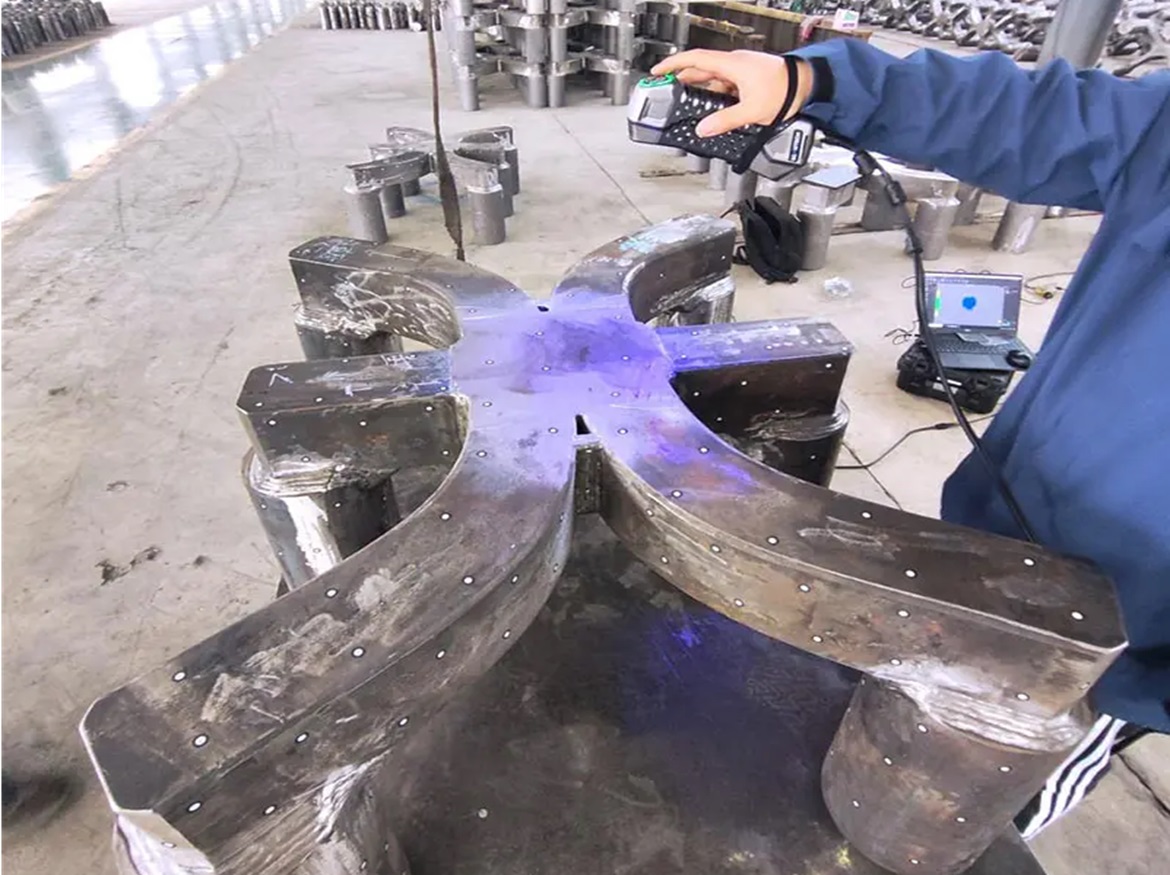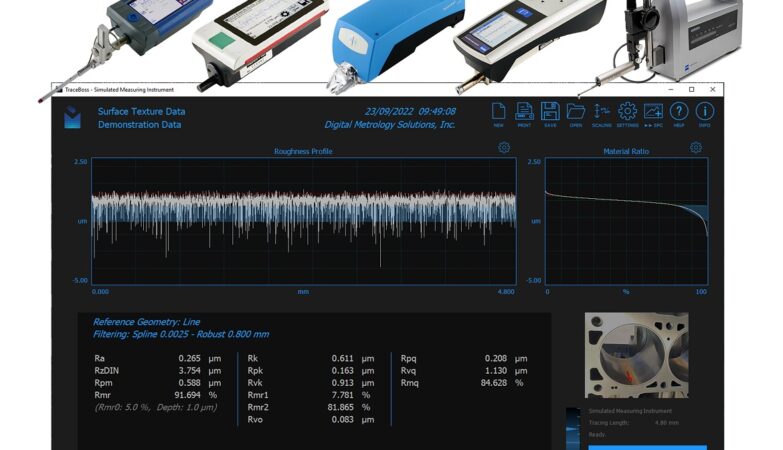In the energy-intensive electrolytic aluminum industry, operational efficiency is paramount. Key to this efficiency is the components that make up the production process, with anode yokes standing out for their crucial role.
Anode yokes, as conductive elements, are integral in ensuring a continuous and stable flow of electricity through the anode assemblies—a backbone of aluminum production.
Given their complex shapes and critical importance, accurately inspecting anode yokes becomes a significant challenge.
This blog presents a customer case study to illustrate how 3D scanning technology has revolutionized the inspection process of anode yokes, showcasing enhanced accuracy, reduced downtime, and improved overall production efficiency.
Spotlight on the Customer
The customer is a high-tech enterprise specializing in the production of metal composite materials and located in Shaanxi, China.
Their products, ranging from titanium-aluminum composite plate blanks to copper-titanium-aluminum transition joints, serve critical roles in various industries, including aerospace and electric power.
In this case, the company conducted inspections on the anode yokes to verify their dimensions, geometry, positional accuracy, and axis distances. The goal was to ensure that each component adhered to stringent quality standards.
However, they encounter recurring efficiency issues attributed to undetected anode yoke defects. Traditional inspection methods were proving inadequate, leading to unplanned downtimes and maintenance costs.
The company sought a solution that could overcome the limitations of traditional inspection methods.
Given the high production volume of anode yoke and the need to provide inspection reports to its customers, the company would prefer efficient and precise inspection solutions that come with visual reports.
These reports play a crucial role in maintaining quality assurance and meeting customer expectations.
The adoption of the SCANTECH SIMSCAN handheld 3D scanner marked a significant advancement in the quality control of essential components like anode yokes.

The Limitations of Traditional Inspection Methods
Traditional inspection methods, reliant on manual techniques and visual assessments, often fall short in identifying early-stage defects in anode yokes.
Manual Measurement Limitations
Traditional tools such as calipers and gauges can struggle with the anode yokes’ complex shapes, leading to potential inaccuracies in measurement.
Inconsistent Data Collection
Manual inspections can yield variable results due to individual differences in technique and interpretation, leading to inconsistent data collection.
Hard-to-Measure Weld Defects
Welding is a crucial method for joining metal pieces, but it can lead to various defects including porosity, undercut, incomplete fusion, cracks and deformations. It is challenging for traditional measurement methods to obtain complete and precise data of these defects.
Time-Consuming Process
Each anode yoke requires careful individual measurement, making the process time-consuming, especially in facilities with a large number of components.
Difficulty in Detecting Internal Flaws
Conventional inspection methods are often incapable of identifying internal flaws within the anode yokes, which can lead to unexpected failures during operation.
Addressing 3D Scanning Specifics
High-tech 3D scanning represents an effective way to measure these complex anode yokes. However, it still encounters some measurement challenges.
Surface Material Reflectivity
The metallic and often highly reflective nature of anode yokes can interfere with the laser or structured light of 3D scanners, resulting in noise and inaccuracies in the captured data.
Complex Geometry Capture
Anode yokes have irregular and complex shapes that can be challenging to scan accurately. Ensuring that the 3D scanner captures all surfaces, including undercuts and hidden areas, requires careful planning and possibly multiple scans from various angles.
Large Data Volume Management
3D scanning produces large volumes of data that must be processed and managed. Handling and analyzing this data to produce accurate and usable models can be resource-intensive.
Scanner Mobility
Given the environment in which anode yokes are situated, portability of the scanning equipment can be crucial. Mobile scanning solutions must balance ease of movement with the capability to perform high-accuracy scans.
Environmental Conditions
The industrial settings where anode yokes are located present environmental conditions—such as lighting variations, temperature extremes, and electromagnetic interference—that can affect the quality of 3D scans.

SCANTECH SIMSCAN: Enhancing Anode Yokes Inspection Accuracy
The client has benefited from several advantages including portability, user-friendly operation, high-accuracy results, and intuitive reporting by choosing Scantech’s 3D laser scanner, SIMSCAN.
High Accuracy for Complex Surfaces
The SCANTECH SIMSCAN 3D laser scanner excels in inspecting anode yokes, thanks to its ability to manage reflective objects effectively.
This scanner achieves an impressive accuracy of up to 0.020 mm, a critical factor for measuring anode yokes with complex shapes accurately.
Its precision allows for the detection of small features and irregularities on intricate surfaces, ensuring that anode yokes fit perfectly and function as intended in electrolytic cells.

Versatile Scanning Anywhere
This handheld 3D scanner is engineered to perform high-quality 3D scans without environmental limitations.
Whether in a temperature-controlled quality assurance lab or on the manufacturing floor with variable conditions, SIMSCAN maintains consistent performance.
This versatility ensures reliable data collection for anode yokes in diverse operational settings.
Portable and User-Friendly
Thanks to its compact design, the SIMSCAN is easy to carry and use, even in narrow and otherwise inaccessible spaces.
This capability is particularly advantageous for scanning anode yokes positioned in situ, and ensures comprehensive coverage during the scanning process, allowing for the accurate capture of detailed geometrical data from every angle of the anode yokes.

Intuitive Inspection Reporting
By importing scan data into professional 3D software for comparison with original models, we can generate intuitive deviation color maps, transforming intricate data into actionable insights.
This process facilitates the creation of clear and detailed inspection reports crucial for power equipment manufacturers, providing visual documentation of anode yokes’ conditions and supporting quality assurance decisions.
These user-friendly reports, enriched with high-resolution scans and color maps, enable a better understanding of inspection outcomes, essential for maintaining high-quality standards and driving continuous improvement processes.
This streamlined approach ensures that findings are communicated effectively, helping to quickly address and resolve any quality issues.

Conclusion
The application of SCANTECH’s SIMSCAN 3D scanner represents a significant stride forward for the electrolytic aluminum industry at large.
By addressing inherent challenges such as intricate component geometries and reflective material properties, the scanner enhances the precision and efficiency of inspections across the board.
Through fostering innovation in 3D inspection, SCANTECH is helping to drive the sector towards improved productivity and reliability, reinforcing the essential role of high-quality components in maintaining the integrity of manufacturing operations.










